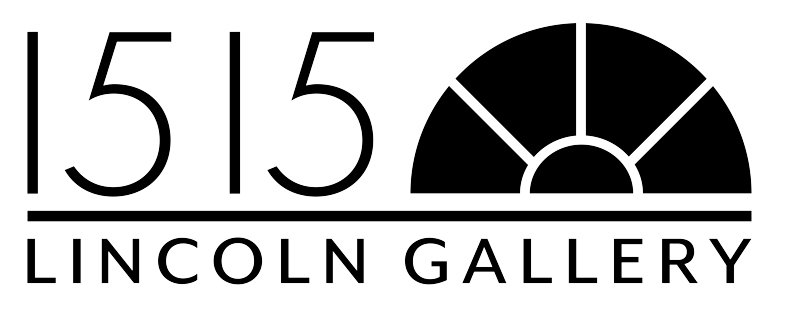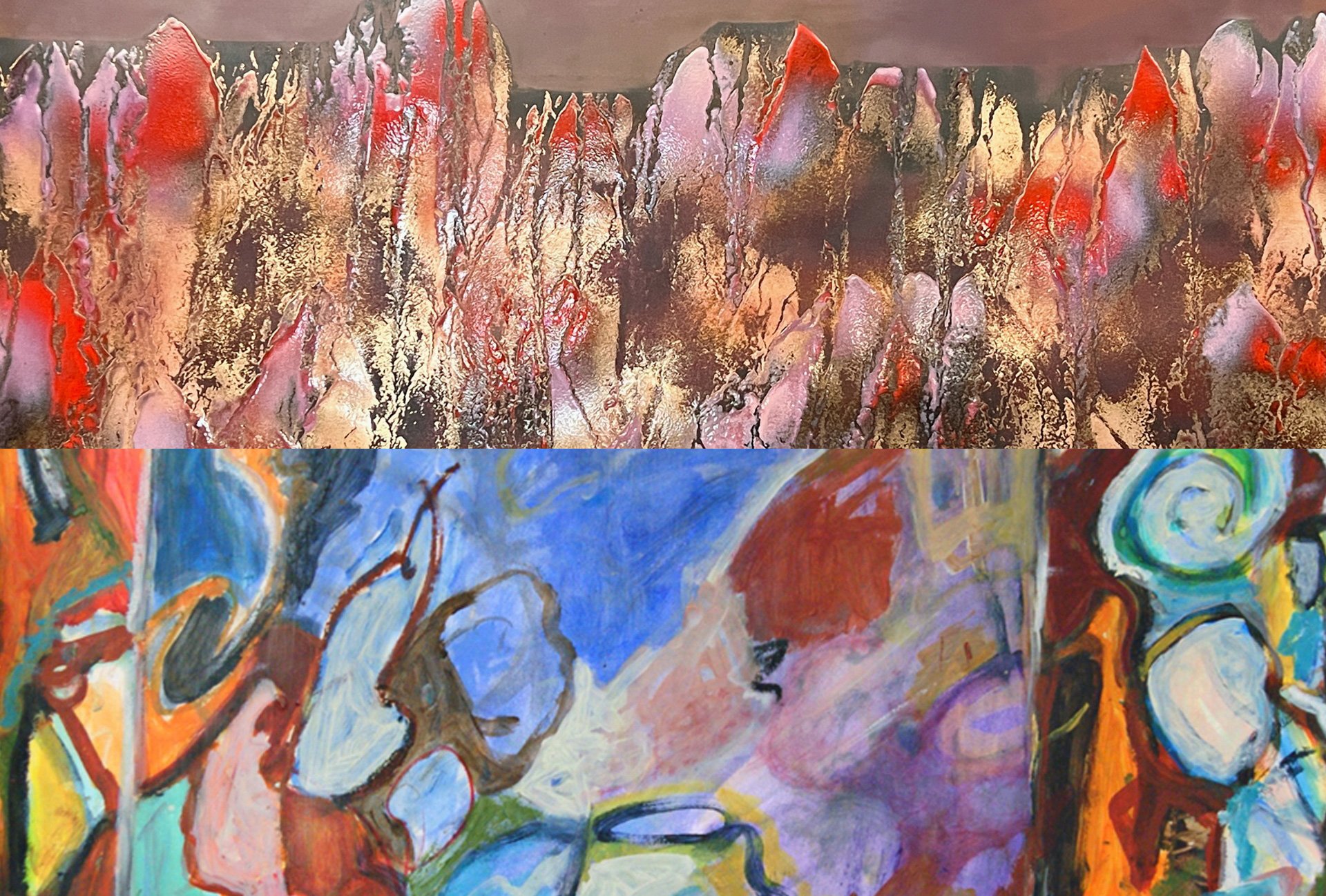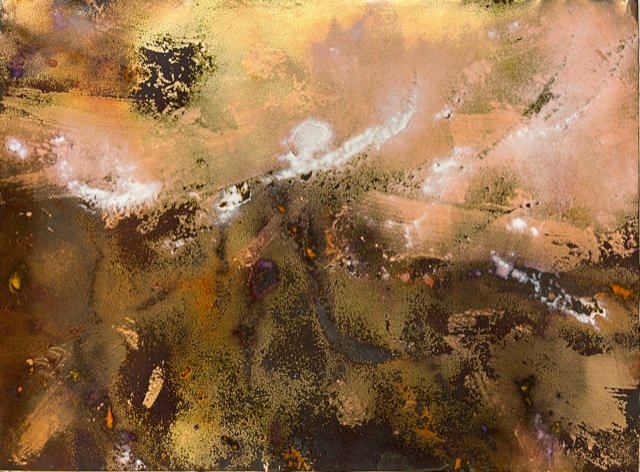‘Generative Abstractions: Paul & Lawrence Hultberg’ is an exclusive exhibition featuring artworks by a celebrated family of artists, Lawrence and the late Paul Hultberg. Coming together for the first time, a body of abstract porcelain enamel artworks produced by innovative enamelist Paul Hultberg, paired with the colorful mixed media abstractions on paper by his son, Lawrence Hultberg. The two have never before exhibited together. In the artworks of father and son Paul and Lawrence Hultberg, we see an unconventional, trailblazing artistic spirit defined by experimentation, exploration and family legacy. Do not miss the opportunity to see this special exhibition and celebrate the creative life of the late Paul Hultberg. The show opens on Thursday, December 21st, from 5 – 8 p.m. and runs through Saturday, January 27th. Lawrence Hultberg will give an artist talk at the gallery on January 6, from 1 - 2 p.m.
ABOUT PAUL HULTBERG
Paul Hultberg (1926-2019) was a printmaker, a painter, a photographer and an art professor, but over his extensive career, Hultberg gained international recognition for his innovative work in enameling, on a scale well beyond how the medium had traditionally been utilized historically. Hailed as an innovator in his field, Hultberg’s abstract expressionist works have been compared to Jackson Pollack and Clyfford Still. He exhibited worldwide, including two world fairs, multiple museums and gallery shows, and was featured in the seminal exhibit, OBJECTS:USA, considered a watershed exhibition in the history of the American studio craft movement; a groundbreaking survey collection of craft works by artists from across the United States, collected by the Johnson Wax Company, that successfully "blurred lines between art and craft, artist and artisan".
Born 1926 in Oakland California, Hultberg attended the Roski School of Art and Design, part of the University of Southern California. After acquiring an interest in mural painting he attended the Instituto Politecnico Nacional in Mexico City, where he worked alongside famed muralist Jose Gutierrez who was helping to create the first acrylic paints. They were seeking a medium that would better survive the outdoor elements. In addition to studying traditional egg tempura, oils and fresco, Hultberg had the opportunity to paint with the new acrylic emulsions before they reached the commercial market. While at the institute, 1948-1949, Hultberg also got to study with two of his childhood heroes, muralists Rufino Tamayo and David Siqueiros.
Hultberg moved to New York in 1951 where he met and married his wife. He enrolled at the Brooklyn Museum School, studying painting and printmaking. In 1953 the school hired him to teach 2-dimensional design, painting and graphics, as well as to help develop their artisans guild program in porcelain enamels. This is where he discovered the enameling medium that he would eventually evolve into his large abstract architectural murals.
Hultberg later taught enameling courses at Haystack Mountain School of Crafts in Deer Isle Maine, and Penland School of Crafts in the Blue Ridge Mountains of North Carolina. In 1966, he accepted full time employment at the State University of New York (S.U.N.Y.) in Rockland County, where he became a popular instructor in drawing, painting, materials and graphics at their Suffern campus. There he taught for over 25 years, receiving his Professor Emeritus in 1993—all the while continuing to paint and exhibit his work.
Hultberg had begun teaching his wife Ethel Hultberg to paint, and from the mid-1970‘s, to the early 2000’s, they ran a gallery together on their property in upstate New York, featuring their own artwork as well as changing shows of artists they knew and admired. In and around 2006, Hultberg and his wife moved to a small village in the South of France, where he spent the last ten years of his life, and where his wife continues to reside and produce art.
To see the invention that Hultberg fabricated to open-air fire his large enameled copper panels, and to hear him describe his creative process, a short award-winning film, REFLECTIONS: the imagery of Paul Hultberg enamelist, can be viewed here: https://vimeo.com/100047991
ABOUT LAWRENCE HULTBERG
An American photographer, digital artist and abstract painter, Hultberg’s parents were active in the New York School of Art that fostered some of the most notable and celebrated artists of the 20th century, most who were close family friends. Though he was not classically trained and considers himself self-taught, Hultberg feels he greatly benefitted from his surroundings and exposure to a wide range of prominent influences within the world of Modern Art, a veritable who’s who of American mid-century modern artists that comprised the New York contemporary art scene at the time.
Born 1953, in Brooklyn, New York, Hultberg’s family moved in 1956 to an artist cooperative in Stony Point, New York called the Gate Hill Coop; 116 wooded acres on a mountainside with cascading waterfalls, also referred to as ‘The Land’. The community was host to many prominent cultural icons of the mid 20th century. Some had been actively involved in the watershed school, Black Mountain College, in North Carolina, until it closed its doors in 1957 after operating for 24 years. It was a “well known as an incubator for artistic talent”. The community where Hultberg lived his childhood embraced architects and filmmakers, musicians and composers, poets and authors, dancers and choreographers, as well as Peaceniks, civil rights leaders, and other influential members of America’s avant-garde.
As a child, Hultberg also explored the forested mountainside in the community they lived, spending a great deal of time in the woods and the creek than ran through them. There was an abundance of wildlife back then. Fascinated by nature, and the microcosm of life found teaming under every overturned rock, nature’s natural patterns, forms and textures greatly inform Hultberg’s design sensibilities. He also credits the mid-century modern architecture of the homes built on The Land where he lived, designed by the community’s founder and benefactor, architect Paul Williams, using low-tech building materials, and that were furnished with Baus-Haus inspired modern fixtures.
In adulthood, Lawrence has thrived in urban landscapes and also became a collector of antique tribal artifacts, appreciating the forms and rich patinas imbued by years of use and handling. He curated a traveling show for the Smithsonian of Tibetan and Himalayan masks, and ran several galleries featuring ethnographic artifacts and contemporary art. Hultberg is most known for his "Urban Abstracts," where mundane artifacts of the urban landscape, often weathered and decayed by both natural and human activities, are photographically reproduced and elevated to works reminiscent of modern art. Hultberg is also known for his Mandalas, complex digital pieces exploring the microcosm and fractal geometries through photography, reshaped into colorful kaleidoscopic images.
In Generative Abstractions we feature Hultberg’s mixed media works on paper, a compelling body of paintings he produced in the 1990’s. The artist prefers the ‘thirsty’ quality of paper over, the use of canvas, as he feels it more readily receives the combination of different mediums he utilizes, which includes acrylic paint, graphite and color pencil, oil crayon and ink.
In addition to painting and his more recent photographic endeavors over the last few years, Hultberg has been conserving a large body of his father’s porcelain enamel artwork produced during the 1950’s and into the 1980’s. Most of the conservation work has, been done by Hultberg in his studio here in Oklahoma City, having lived in OKC for the last six years. It’s been a labor of love, conserving the body of work, and bringing his father’s art back to life and to greater awareness in the public eye. The newly conserved enamels, which had been stored away for more than thirty years, have since been exhibited in major art fairs, gallery and museum exhibitions, and featured in articles and catalogs, both in print and online. Selected exclusively for 1515 Lincoln Gallery, most of the pieces shown in Generative Abstractions had never before been seen by the public or offered for sale.







